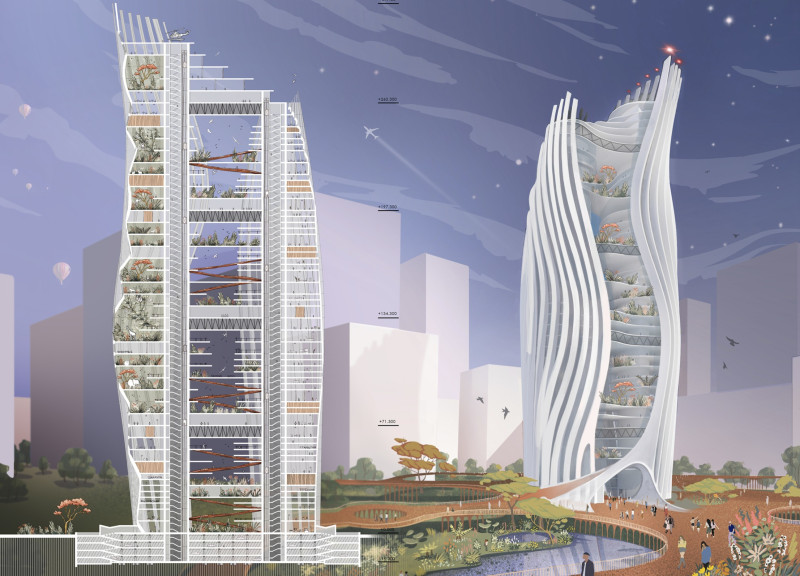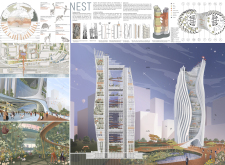5 key facts about this project
The project is a vertical nature reserve located in central Cape Town, South Africa. It sits near the main boulevard and port area, aiming to tackle the important issue of animal extinction within an urban environment. The design features a bifurcated tower structure. This approach emphasizes height while creating different functional areas that blend ecological conservation with community involvement.
Spatial Organization
The building supports endangered species through specific areas dedicated to a nature reserve and an educational center. These spaces help raise awareness about biodiversity and conservation efforts. There are also offices and research facilities included, which allow for in-depth studies and animal care.
Functional Areas
The total area of the project is 153,500 square meters, not counting the basement. It includes 61,300 square meters for offices and research spaces, and 50,800 square meters for animal care. Additionally, 20,500 square meters is allocated for food and retail, with an 8,900 square meter grand lobby entrance. For convenience, a basement offers 32,000 square meters for parking. The building also has 12,000 square meters set aside for auxiliary spaces.
Design Considerations
Natural ventilation is a key focus in the design, which improves the indoor environment and reduces the need for mechanical cooling. The varying heights of the structure provide visual interest and create a dynamic skyline. It features a protective shell that helps limit direct sunlight, enhancing energy efficiency and comfort for visitors inside.
Ecological Integration
The design responds to urban challenges related to biodiversity. It connects public areas with research functions, showing how nature can coexist with city life. A central circulation system links different spaces within the building, facilitating movement and encouraging interaction among visitors. This design detail brings together the community and the mission of conservation as a fundamental part of the experience.



















































